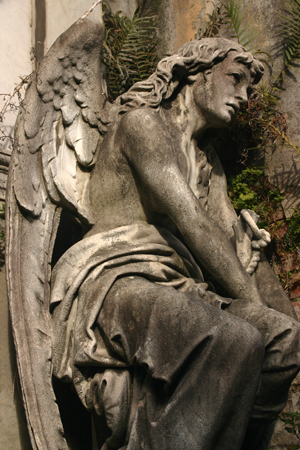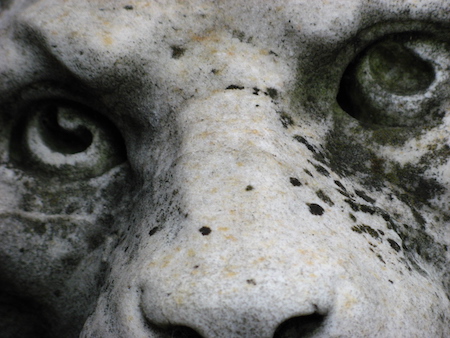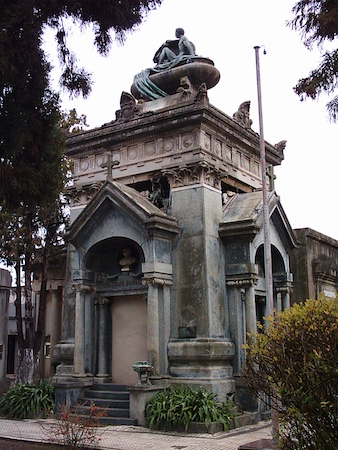
Between 1869 & 1871, Buenos Aires endured two disastrous epidemics: first, cholera, that left 9,000 dead & second, yellow fever, which claimed 14,000 victims. The city government put into practice new sanitation practices, including the removal of tanneries & slaughterhouses from residential areas. Business owners received big tax breaks if they agreed to relocate.

Due to those incentives, Juan Bautista Berisso —an Genovese immigrant born in 1834— purchased 28 hectares in Ensenada, near the future location of La Plata. He established a successful tannery & in following years acquired a distillery, a vegetable oil factory, dock facilities & a number of cattle ranches.

Berisso passed away in 1893 & is buried in an extraordinary family plot rarely seen by tourists because of its somewhat hidden location. Beautiful works by Italian sculptor Alessandro Biggi decorate the mausoleum, with Chronos (Father Time) on the left, a female angel with an anchor on the right & two lions guarding the entrance:



In La Plata, another branch of the Berisso family built the largest mausoleum in the cemetery, currently abandoned:

Como es de nuestro conocimiento las alegorías son representaciones de ideas abstractas por medio de figuras humanas. Esta bóveda tiene una lectura simbólica interesante. El león en el lenguaje simbólico cristiano ha representado la fortaleza. Aquí aparentemente son los custodios de este espacio. A un lado tenemos un ángel apoyado en un ancla. Esta imagen desde el comienzo del cristianismo se la asocia con la fe. En tiempos de persecución el ancla ocultaba en cierta manera una cruz. Al otro lado una estatua que se supone representa al dios griega Cronos, el señor del tiempo y es portador de una inmensa guadaña. En la simbología cristiana esa guadaña no tiene un significado fatal sino que como herramienta de la agricultura, nos recuerda que al final del tiempo hemos de cosechar aquello que hemos sembrado.